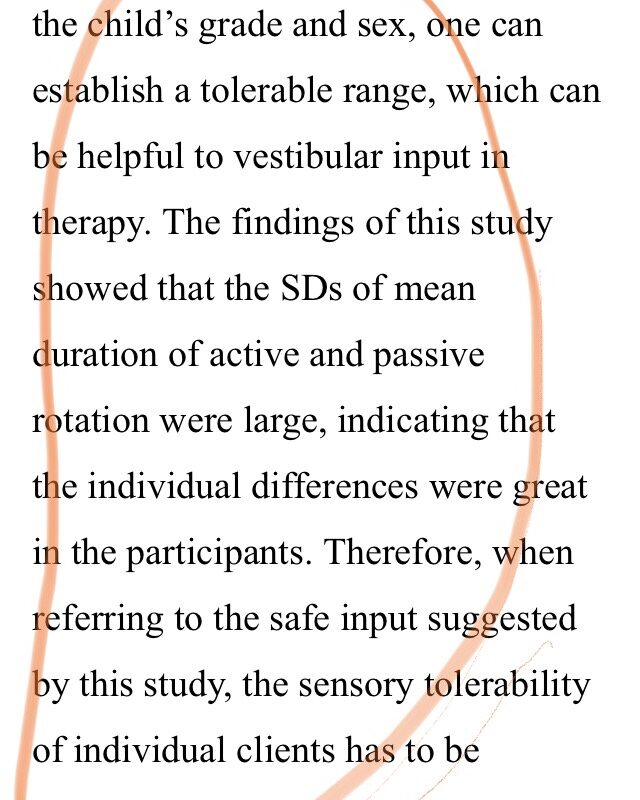The answer to a question on SI4OT, a FB group for OT’s curated by our social media team, includes this interesting article.
This study was focussing on the vestibular system, and the researchers tried to work out the exact amount of vestibular input needed in therapy. The results strongly suggest that it is very individualised and requires direct therapist observation to know. This is exactly in line with Ayres’ teachings. There is no exact amount that can be prescribed
A study of safety and tolerability of rotatory vestibular input for preschool children
The use of sensory input to support function, health and wellbeing is an art and a science.
The science is knowing for instance that habituation of tactile input to Ruffini nerve ending is usually fairly rapid – eg light touch as we put arms in shirt sleeves while habituation to pain receptors will vary a lot and maybe ongoing after tissue damage we can’t always see.
The art is that our response to sensory input to sensory systems will vary greatly and is very individualised. This response is not just linked to immediate registration and perception of the input – meaning and memory need to be considered too. Think about happy smells and songs that stay in your head all day. Think too about the response to trauma when a person smells their abuser’s perfume.
There is no recipe for how much to give and when. This is the art and science of ASI. So many factors impact on what a person needs and when to have an adaptive response.
This is why sensory input is not just something you can prescribe someone by saying;
“Give Jane 20 mins on a swing 3x a day”

Essential to practice is the person’s response to sensory input – Do they have an adaptive response?
“Ayres (1972b) described the adaptive response as central to praxis intervention. Adaptive responses are purposeful actions directed toward a goal that is successfully achieved, and the production of adaptive responses is thought to be inherently organizing for the brain. Ayres (1972b, 1985) further emphasized that SI intervention was a transaction among client, task, and environment.”
Bundy, A. and Lane, S. [2019], Sensory Integration Theory and Practice, 3rd Edition, [Philadelphia]. Available from: FADavis.
Watching and seeing this response to input, alongside feedback from the parents/family/person is what we do to understand each person’s unique responses and pattern. However, knowing and remembering that many things can impact on this, day to day and even minute by minute is essential.
